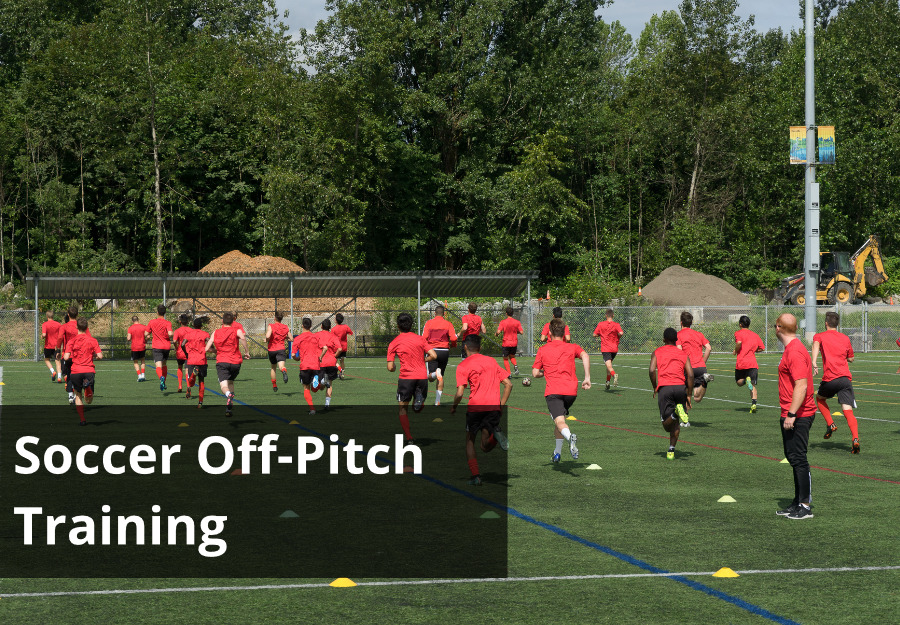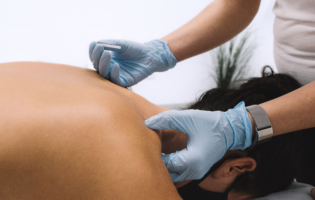Total Therapy Blog

Soccer Off-Pitch Training
Hey soccer players! With about a month before the new soccer season, now is the time to start thinking about the game you love at a physical level. What do you want to achieve this upcoming season? How can you as a player improve? Faster, stronger, more powerful, unpredictable to your opponents… Get through the season uninjured, perhaps. How do you get there?
We all know soccer is a highly dynamic sport. It involves multi-directional movements, constant speed changes, and numerous skills sets. Being off-season and/or off-pitch is the perfect time to be working on absolute control over your own body:
Step 1: Learn to move correctly. This is imperative to avoid injury.
Step 2: Increase intensity, weights, speed.
Step 3: Transfer your newfound strength, endurance, and power to your game.
UPPER BODY
Soccer is a lower limb-dominant sport, so the upper body ends up getting the lesser half of the deal. However, the upper body is actually still quite important in generating power.
Arms pump contralaterally to the legs (right arm swings forward with the left leg, and vice versa) in sprinting, jogging, kicking, etc. They are the starting point to create power, and that power transfers down to the legs to generate a strong kick, quick sprint, or high jump. Our bodies are kind of like scissors: moving the handles cause the blades to move; the faster the handles move, the faster the blades move; the more grip strength at the handles, the more cutting power the blades have.

You can see how the arms drive the motion in our skeleton gif. Below we have the single arm row that can help you develop this power. Do you see a resemblance in the running versus exercise? It wasn’t a coincidence that I chose this drill!

STRENGTH VS MOBILITY
To kick, one leg acts as a pivot point as the other leg swings with both strength and speed. Kicking is the product of stability of one leg and mobility of the other.
A right-footed player is going to have better mobility in their right hip (look at how far she’s getting that leg back!) and stability in the left.

Enter: the reverse lunges. I love/hate them! Hip, knee, and ankle stability are challenged on both sides, but arguably more on the front leg. Meanwhile, you’re working on mobility with the back leg– you’ll feel it!

It’s important to perform both sides so you can work on your natural kick, as well as balancing out either side. Evening out the strength/mobility relationship between the legs will help with both on-field ball skills, injury prevention, and even day-to-day posture and spinal health.
CORE
We’ve arrived at the VIP: the core. A strong core is vital for allowing the transfer of power from upper to lower, holding your own against an opponent, and preventing poor mechanics that can leave you vulnerable to injuries (both acute and over-use). There are basic exercises to build and retrain the core, which can then be modified to be more soccer-specific. Here we have the bird-dog, translated to the more upright wall knee-drives, followed by actual sprinting.


JOINT STABILITY
In a highly dynamic, high-intensity sport like soccer, we should think of the core as so much more than just the abdominals and obliques. It’s no secret that soccer places a higher risk of injury on lower joints like hips, knees, and ankles.


In particular, ACL injuries are cropping up more and more and at earlier ages due to poor mechanics, over-specialization, over-strengthening one area, and neglecting the other. Hip, knee, ankle, and foot stability are just as important as trunk stability; therefore, they should be an integral part of your training.










Follow Us!
& Stay Up To Date
BLOG